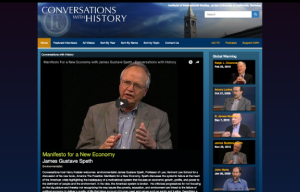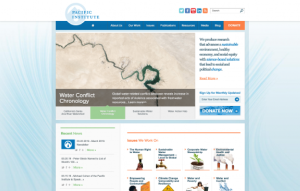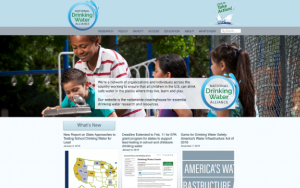 |
March 22, 2019 Volume 25, Number 12 |
World Water Day is March 22, 2019: a day of observance that celebrates the importance of fresh water. We decided to dedicate our theme this week to this important event and we hope our readers will enjoy the resources we've highlighted.
General Interest |
Theme: World Water Day |
Revisited |
In the News |
General InterestBack to Top | |
 |
|
 |
|
 |
|
 |
|
 |
|
Theme: World Water DayBack to Top | |
 |
|
 |
|
 |
|
 |
|
 |
|
RevisitedBack to Top | |
 |
|
In the NewsBack to Top | |
Mathematician Karen Keskulla Uhlenbeck Is First Woman to Win Prestigious Abel Prize | |
|
Karen Uhlenbeck Is First Woman to Win Abel Prize for Mathematics Soap-bubble pioneer is first woman to win prestigious maths prize Karen Uhlenbeck, Uniter of Geometry and Analysis, Wins Abel Prize Interview with Karen Uhlenbeck Women in mathematics: The history behind the gender gap Math of Soap Bubbles and Honeycombs On March 19, 2019, Dr. Karen Keskulla Uhlenbeck became the first woman to be awarded the Abel Prize, one of the world's most prestigious honors in the field of mathematics. The Abel Prize, which is modeled after the Nobel Prizes and recognizes significant advances in mathematics, has been granted annually by the Norwegian Academy of Science and Letters since 2003. A Professor Emeritus of the University of Texas at Austin and a visiting scholar at Princeton University's Institute for Advanced Study (IAS), Uhlenbeck made research contributions that were revolutionary for both mathematics and physics. One of her early breakthroughs resolved a difficulty with the mathematical theory of minimal surfaces, which addresses how soap bubbles arrange themselves to require the least energy. Uhlenbeck's work on this theory, which she conducted with mathematician Jonathan Sacks, led to the establishment of a new branch of mathematics called geometric analysis. She later applied a similar technique to gauge theories, which are mathematical generalizations of the theory of classical electromagnetic fields that underlie standard particle physics and are used today to study subatomic particles. Although she was initially reluctant to embrace being a role model, Uhlenbeck has also been a tenacious advocate for women in mathematics and founded a mentoring program for women in the IAS at Princeton. [JDC] At the first three links, readers will find recent news articles celebrating Dr. Uhlenbeck's achievements and explaining their significance. Respectively, these were written by Kenneth Chang for The New York Times, Davide Castelvecchi for Nature, and Erica Klarreich for Quanta Magazine. For readers who are particularly interested in Uhlenbeck's research, the third article addresses her work in more detail. At the fourth link, readers will find a lengthy interview with Uhlenbeck conducted by Allyn Jackson for Celebratio Mathematica in March 2018, in which Uhlenbeck discusses her life, research, and experiences in academia. Those curious to learn about other women mathematicians should check out the fifth link, which leads to an article written by Dr. June Barrow-Green for the Open University about the adversity and accomplishments women have experienced in mathematics throughout history. The last link, written by Mei Li for Brilliant, takes readers to an approachable introduction to the mathematics behind soap bubbles (and honeycombs) and includes a recipe for a bubble formula for those who may want to experiment with bubbles at home or in the classroom. | |





